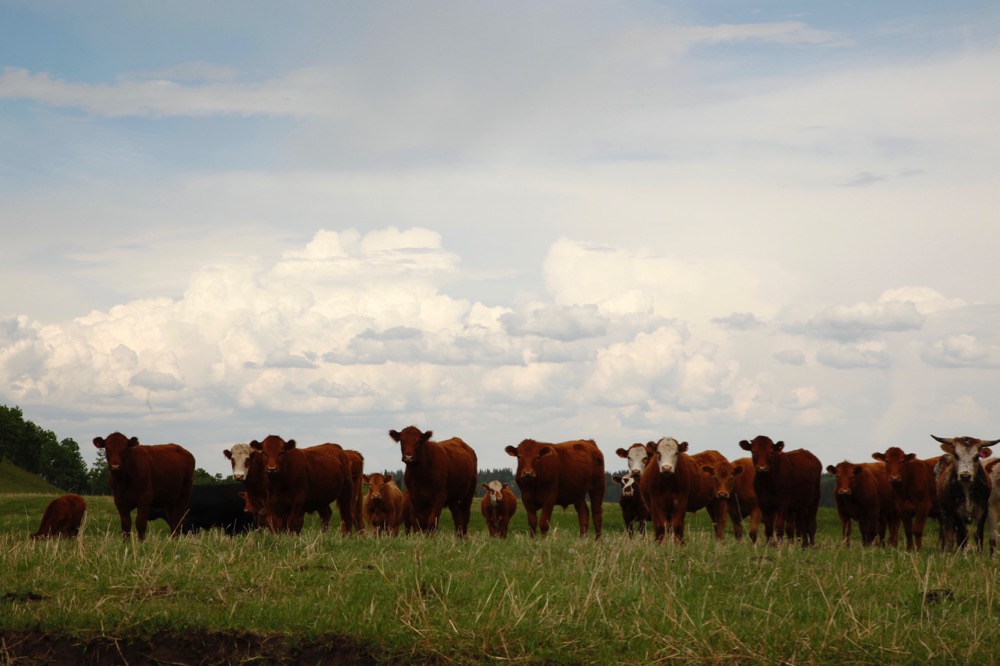Lee Hart’s note— Not too many farmers and ranchers would deliberately throw $4,000 or $5,000 in cash out the truck window and into the wind. But if you are paying a bit more for winter feed than you need to, that money-out-the-window is really what might be happening, according to a recent Beef Cattle Research Council (BCRC) blog.
Paying 25 or 30 cents more per head/per day for one type of feed over another — such as hay versus silage or greenfeed —may not seem like much, but you add that up for the herd every day over the winter feeding period(100 head for 150 days, for example) and in total you are looking at between $3,500 and $5,000 for the season.
Read Also
Some perspectives of what’s in store for 2022
By Lee Hart Between COVID-19, supply-chain disruptions and now the conflict in the Ukraine it seems like any calm or…
It might be a bit late now to think about making silage or greenfeed for this winter feeding season, but there may be some other lower cost options to consider, and maybe it is just something to think about for next year.
Here is the recent BCRC blog that can be found on their website at: http://www.beefresearch.ca/
How will the use of alternative feeds affect winter feeding costs this year?
Producers can use BCRC’s decision making tool Winter Feeding Rations and Estimated Costs to calculate and compare the costs of main feed ingredients in different rations.
Based on feed ration examples available on provincial government websites, the cost of main feed ingredients in different rations are estimated for beef cows at 1,400 lbs in mid-pregnancy with a body condition score of three.
Two price scenarios are considered: scenario one assumes that hay and alternative feed prices are steady with the most current published prices; scenario two assumes steady hay prices and declines in alternative feed prices based on Agriculture and Agri-Food Canada’s grain price projections for the 2019/20 crop year.
It should be noted that this analysis only includes the main feed ingredients, while other costs such as vitamins, minerals, yardage, and labour are excluded.
Table 1. Rations and Estimated Costs for Main Feed Ingredients Ration examples and nutrient values of feed sourced from Saskatchewan Agriculture winter feeding guidelines and Ontario Agriculture Coping with Hay Shortage in Beef Cow Wintering Ration
**These rations require supplemental minerals, vitamins and salt
*** Prices sourced from Alberta Agriculture Farm Input Prices report (Aug, 2019), Saskatchewan Forage Market Price Discovery Report (Aug-Dec 2018), Manitoba Forage and Grassland Association Hay Relief Reports (Sept, 2019), Ontario Hay Listing (Sept, 2019), Beef Farmers of Ontario, Canola Council of Canada
**** Projections based on Agriculture and Agri-Food Canada Outlook for Principle Field Crops (Sept 2019) projected prices
The cost comparisons in Table 1 shows that rations based on silage and greenfeed generally cost less than the hay-based rations in both western and eastern Canada, based on these price assumptions.
For example, at current price levels, the main ingredients (alfalfa hay and cereal straw) in ration #2 are estimated to cost $1.74 per cow per day compared to ration #5 (Cereal Straw and Greenfeed) at $1.47 per cow per day, which is a 16 per cent difference. For a 150-day winter feeding period for 100 cows, this represents a $4,000 difference in total feeding costs.
If hay prices stay steady and alternative feeds prices go lower, the cost difference between the two rations would expand to about 20 per cent or $5,250 for 100 cows with a 150-day feeding period.













